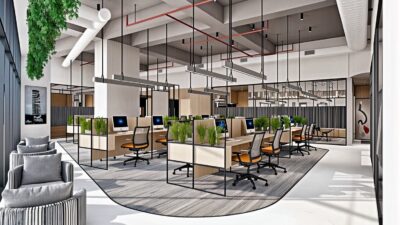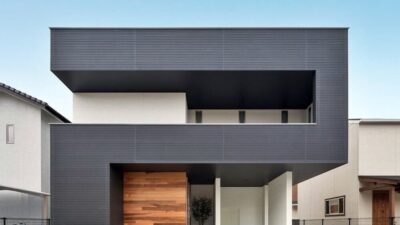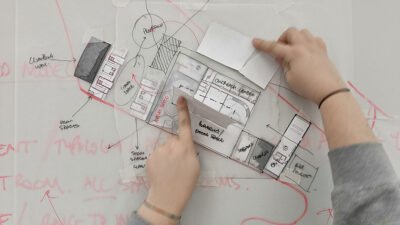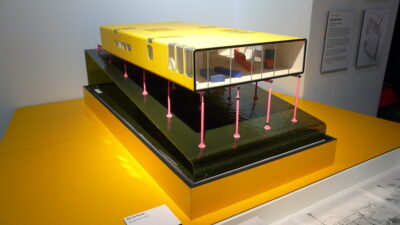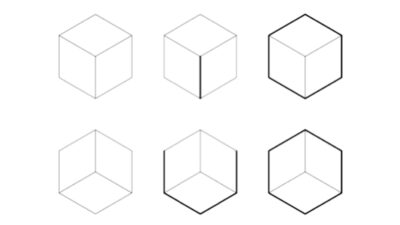In the realm of sustainable architecture, an innovative and harmonious approach known as “Biophilic Architecture” is taking center stage. This design philosophy seamlessly integrates the natural world into our built environments, offering an array of benefits for both the inhabitants and the planet. In this comprehensive guide, we will delve into the captivating world of biophilic architecture, exploring its principles, applications, and the profound values it brings to the realm of sustainability.
The Essence of Biophilic Architecture
Biophilic architecture, often referred to as the architectural manifestation of biophilia, is founded on the innate human connection with nature. It seeks to foster this connection by incorporating natural elements into our built surroundings. This holistic approach is characterized by several key principles:
Nature-Inspired Design
Biophilic architecture draws inspiration from nature’s patterns, colors, and textures, creating spaces that resonate with the beauty and harmony found in the natural world. This approach can be seen in the use of organic shapes, earthy color palettes, and the integration of materials like wood and stone.
Incorporating nature-inspired design elements allows architects to mimic the aesthetic appeal of the outdoors. For example, the use of curved, flowing lines in architecture can mirror the grace of natural forms such as tree branches or riverbanks. Earthy color palettes consisting of greens, browns, and blues evoke the serenity of a forest, while the integration of materials like wood and stone brings the tactile experience of nature indoors.
Maximizing Natural Light
One of the fundamental aspects of biophilic design is the maximization of natural light. Large windows, skylights, and open floor plans allow an abundance of sunlight to flood indoor spaces, reducing the need for artificial lighting and promoting a connection with the outside environment.
Maximizing natural light within buildings not only enhances the aesthetics of a space but also has significant practical implications. The presence of ample natural light can lead to reduced energy consumption and lower electricity bills. It also positively impacts the well-being of occupants by creating a bright and inviting atmosphere that supports circadian rhythms.
Incorporating Natural Elements
To create a genuine connection with nature, biophilic architects often incorporate living elements, such as indoor plants and green walls. These elements not only improve air quality but also contribute to a calming and rejuvenating atmosphere.
Indoor plants have the ability to purify the air by removing toxins and releasing oxygen, creating healthier indoor environments. Green walls, covered in vegetation, offer a visually striking way to bring nature indoors while also providing natural insulation and noise reduction. These elements transform spaces into vibrant, living ecosystems that promote well-being and tranquility.
The Benefits of Biophilic Architecture
The integration of biophilic principles into architectural design yields a multitude of benefits that extend far beyond aesthetics. Let’s explore the values of biophilic architecture in detail:
Improved Well-being
Studies have shown that exposure to nature and natural elements within the built environment can enhance mental and physical well-being. Biophilic design has been linked to reduced stress levels, increased productivity, and faster healing in healthcare settings.
Improved well-being is a cornerstone of biophilic architecture. Access to natural elements, such as greenery and natural light, has a profound impact on our psychological and physiological health. When individuals are surrounded by these elements, they experience lower stress levels, improved mood, and increased cognitive function. In healthcare settings, patients in rooms with views of nature often recover more quickly and require less pain medication.
Sustainable Living
Biophilic architecture aligns seamlessly with sustainability goals. By reducing the reliance on artificial lighting and heating, it lowers energy consumption and carbon footprint. Moreover, the use of natural, sustainable materials contributes to a greener future.
Sustainable living is at the core of biophilic architecture’s value proposition. The design’s emphasis on natural light, ventilation, and passive heating and cooling techniques leads to reduced energy consumption. Additionally, the selection of sustainable materials, such as reclaimed wood or recycled metal, further minimizes the environmental impact of construction projects.
Enhanced Creativity
Incorporating natural elements into workspaces can boost creativity and innovation. Natural surroundings have been shown to stimulate cognitive functions, leading to increased problem-solving abilities and fresh perspectives.
Enhanced creativity is a valuable asset in both professional and educational environments. Biophilic architecture fosters an atmosphere where individuals feel inspired and connected to their surroundings, allowing them to think more creatively and generate innovative ideas. This, in turn, can lead to improved work performance and educational outcomes.
Connection with Nature
Biophilic architecture fosters a deep connection with the natural world, helping occupants reconnect with their surroundings. This connection can lead to a greater appreciation of the environment and a desire to protect it.
The human connection with nature is a fundamental aspect of biophilic architecture. By immersing people in natural elements and providing opportunities for interaction with the outdoors, this design philosophy rekindles a sense of wonder and appreciation for the environment. This newfound connection often leads to a heightened environmental consciousness, inspiring individuals to make sustainable choices and protect the natural world.
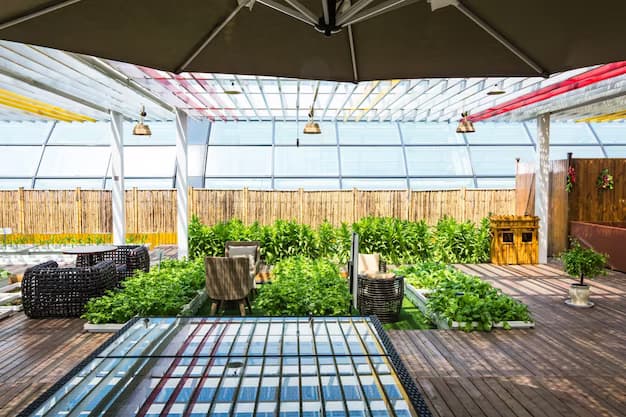
Applications of Biophilic Architecture
Biophilic architecture has found its way into various domains, transforming the way we design and interact with spaces. Here are some notable applications:
Residential Design
In residential architecture, biophilic principles create homes that are not just aesthetically pleasing but also nurturing environments for families. Features like green roofs and courtyards offer residents a serene oasis within the urban jungle.
Biophilic architecture’s impact on residential design goes beyond aesthetics. It creates homes that promote well-being, health, and sustainability. Features such as green roofs not only provide additional insulation but also serve as natural habitats for birds and insects, contributing to urban biodiversity. Courtyards and private gardens offer residents opportunities for relaxation and connection with nature, fostering a sense of peace and tranquility within bustling urban environments.
Workplace Environments
Many forward-thinking companies are embracing biophilic design to create healthier and more productive workplaces. Natural lighting, indoor plants, and the use of natural materials create inviting office spaces that support employee well-being.
Workplace environments play a significant role in employee satisfaction and productivity. Biophilic architecture in office spaces enhances the work experience by providing a stimulating and refreshing atmosphere. The presence of indoor plants not only purifies the air but also reduces stress levels, leading to improved job satisfaction and creativity. Natural light promotes alertness and concentration, making it an essential component of biophilic office design.
Educational Institutions
Schools and universities are incorporating biophilic elements into their buildings to enhance the learning experience. Classroom designs that bring nature indoors have been shown to improve students’ concentration and academic performance.
The application of biophilic principles in educational institutions is a promising trend in modern architecture. In classrooms, the integration of natural elements can enhance the learning environment. For example, large windows with views of green spaces or courtyards can inspire students and facilitate better focus during lessons. The presence of natural materials, such as wooden furniture or floors, creates a warm and inviting atmosphere conducive to learning.
Healthcare Facilities
Biophilic design is transforming healthcare facilities by creating environments that aid in the healing process. Patient rooms with views of nature and garden spaces promote a sense of tranquility and aid in recovery.
Healthcare facilities are increasingly recognizing the therapeutic benefits of biophilic architecture. Patient rooms that offer views of nature, such as gardens or natural landscapes, have been shown to reduce stress and anxiety, which can accelerate the healing process. Incorporating natural elements into healthcare settings also benefits staff by reducing burnout and improving job satisfaction.
Biophilic Architecture vs. Traditional Architecture: A Comparison
To appreciate the value of biophilic architecture fully, let’s compare it to traditional architectural approaches:
Aspect
| Aspect | Biophilic Architecture | Traditional Architecture |
|---|---|---|
| Connection with Nature | Integral and deliberate | Limited and incidental |
| Environmental Sustainability | High | Variable |
| Well-being Enhancement | Significant | Minimal |
| Energy Efficiency | Improved | Standard |
Biophilic architecture stands out in several key aspects when compared to traditional architectural approaches. Its deliberate emphasis on the connection with nature, high level of environmental sustainability, significant enhancement of well-being, and improved energy efficiency set it apart as a forward-thinking and holistic design philosophy.
Biophilic Architecture in Practice
Understanding the principles and benefits of biophilic architecture is just the beginning. To truly appreciate its value, it’s essential to explore real-world examples where these concepts have been successfully implemented:
Amazon Spheres, Seattle
Amazon’s iconic Spheres in Seattle serve as a prime example of biophilic architecture. These massive glass domes house a lush, plant-filled interior, providing a serene escape for employees and visitors amidst the bustling urban environment.
The Amazon Spheres are a testament to the integration of nature into the corporate workplace. These domes, filled with over 40,000 plants from around the world, create a unique environment where employees can work, relax, and connect with nature simultaneously. The result is a visually stunning and biophilic-inspired space that fosters creativity and well-being.
The Bullitt Center, Seattle
The Bullitt Center, often called the greenest commercial building in the world, exemplifies biophilic design. It boasts features like rainwater harvesting, composting toilets, and ample natural lighting, setting new standards for sustainable office spaces.
The Bullitt Center showcases how biophilic architecture can push the boundaries of sustainability in commercial buildings. Its innovative systems, such as rainwater harvesting and composting toilets, reduce water consumption and waste generation. Large windows and skylights maximize natural lighting, contributing to energy efficiency and occupant well-being.
The Singapore Changi Airport, Jewel
Singapore’s Jewel Changi Airport showcases the incorporation of biophilic elements into a bustling transportation hub. Its indoor waterfall, forest valley, and lush greenery create a calming and immersive experience for travelers.
Jewel Changi Airport redefines the airport experience by seamlessly integrating nature into a busy travel hub. The indoor waterfall, known as the Rain Vortex, is the world’s tallest indoor waterfall and serves as a captivating centerpiece. The Forest Valley, filled with thousands of trees and plants, provides a soothing and rejuvenating environment for travelers, transforming the airport into a destination in itself.
Biophilic architecture goes beyond theory and finds practical applications in these remarkable real-world examples. These projects demonstrate that biophilic design principles can be successfully implemented in various settings, offering tangible benefits for occupants and the environment.
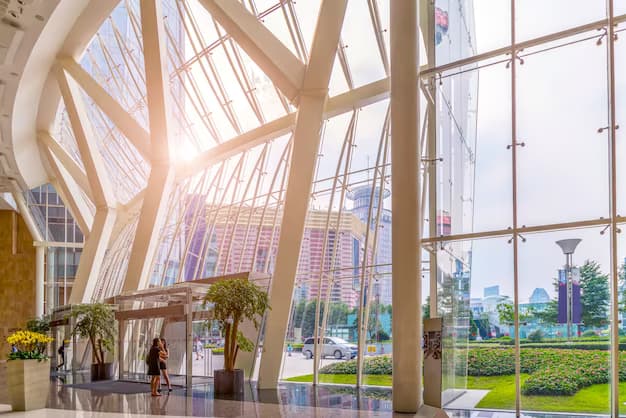
Biophilic Architecture and Sustainable Design
Biophilic architecture and sustainable architecture share a profound synergy in their commitment to creating a more harmonious and environmentally conscious built environment.
Sustainable Architecture: Sustainable architecture is an overarching design philosophy that seeks to minimize the negative environmental impact of buildings while promoting efficient use of resources. It encompasses various principles, including energy efficiency, use of renewable materials, and reducing waste. Biophilic architecture seamlessly integrates with these principles, amplifying their impact.
- Energy Efficiency: Biophilic architecture’s emphasis on maximizing natural light and ventilation inherently reduces the reliance on artificial lighting and mechanical HVAC systems. This results in significant energy savings, aligning with sustainable goals for reduced energy consumption and carbon emissions;
- Use of Sustainable Materials: Biophilic design often incorporates natural and sustainable materials such as wood, stone, and recycled materials. This conscious selection of materials reduces the environmental footprint of construction projects, contributing to sustainable practices;
- Biodiversity and Ecosystem Support: Beyond energy efficiency and material choices, biophilic architecture promotes biodiversity and ecosystem support. Green roofs, vertical gardens, and sustainable landscaping not only beautify spaces but also provide habitats for local wildlife and help mitigate the urban heat island effect;
- Longevity and Resilience: Biophilic design, with its focus on enhancing occupant well-being, fosters a deeper connection with the built environment. This can lead to greater care and maintenance of structures, increasing their longevity and resilience—a key aspect of sustainability.
Incorporating biophilic architecture principles into sustainable design approaches creates a holistic framework that not only reduces environmental impact but also enhances the quality of life for building occupants. This integration exemplifies how the values of biophilic architecture extend into broader sustainability goals, reinforcing the importance of creating spaces that nurture both individuals and the planet.
Conclusion
Biophilic architecture represents a harmonious union between human-made structures and the natural world. It goes beyond aesthetics, offering tangible benefits such as improved well-being, sustainability, and creativity. As we continue to seek sustainable solutions for our built environment, biophilic architecture emerges as a vital contributor to a healthier, more interconnected world.


